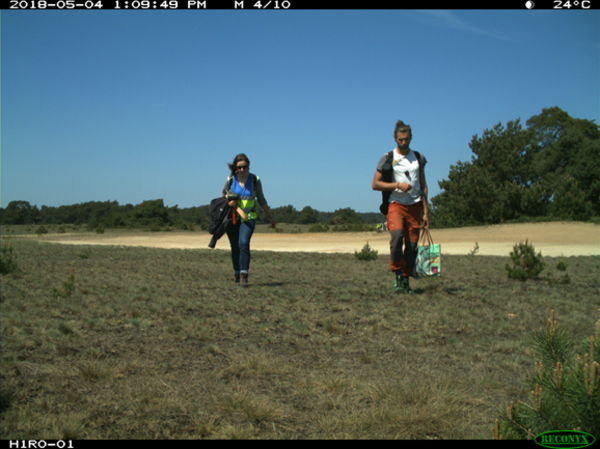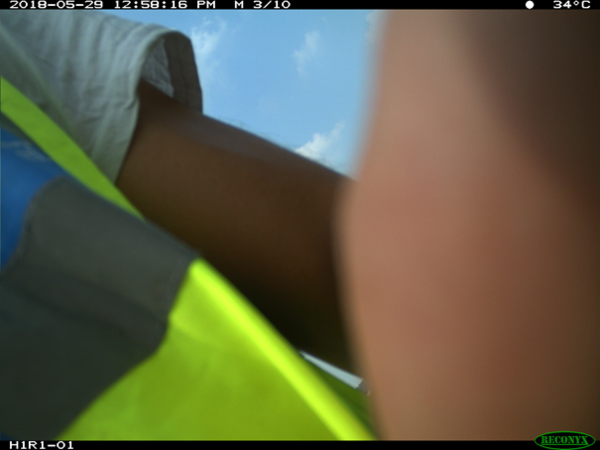Researchers spotted!
“Why do I sometimes see humans in the images? Why have these not been filtered out? Is someone trying to steal the cameras?” These are examples of questions that the team has come across in the Snapshot Hoge Veluwe forum. In this blog we share more about who these people are, what they do and why they are sometimes caught on camera.

The dozens of camera traps that have been placed throughout the Park have to be checked regularly. During these maintenance rounds, the cameras’ battery levels are checked, the memory cards are collected and wherever needed the cameras are cleaned. All of this makes sure that the cameras are in a good condition to keep taking photos for Snapshot. These maintenance rounds are done by gamekeepers of the Park, but sometimes also by students who work on a research project around the camera network.
There is a chance that you have already come across (not so flattering) pictures of me on Snapshot, so it is time for me to introduce myself. My name is Anne and I am currently taking an internship at the Hoge Veluwe as a student from Wageningen University. As a part of this internship I analyse the vegetation around the cameras together with Jonathan (see the blog titled ‘Small poles in the ground and vegetation relevés’).

Sometimes it is quite difficult to find the cameras, despite a map and GPS, because their location has been decided through a random model on the computer. This means that sometimes it is quite a stroll to get to them, and as a result us interns, other researchers and the Park’s gamekeepers are often caught on camera. Sometimes clearly visible, usually with a blue and yellow vest on, but also sometimes all you see is an arm, a leg or some hair blowing in the wind. These sequences of images should be filtered out by the system before they are uploaded into Snapshot, but as you can imagine this is not so easily achieved. Sometimes it is not so easy for the computer to distinguish a human from an animal, especially for instance humans on horses, or when only parts of the body are visible. The privacy filter system is therefore still learning. It should get better as it comes across more images of humans, so in the future you will hopefully not come across us researchers or Park staff on Snapshot and all images actually contain some kind of wildlife!